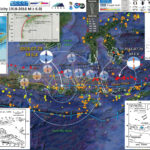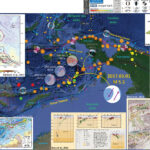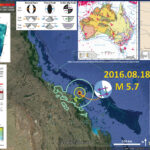Earlier today there was a shallow M 6.4 earthquake with an epicenter on the island of Lombok, Indonesia. With a hypocentral depth of about 7.5 km, this size of an earthquake can be quite damaging. The USGS PAGER estimate of…
Earthquake Report: Banda Sea
Earlier this week there was a moderate earthquake along a strike-slip fault that appears to adjoin the Banda/Timor/Java Arc with New Guinea. This strike-slip fault appears to cross oblique to the subduction zone that forms the Timor Trench to the…
Earthquake Report: Australia!
Yesterday there was an earthquake in northeastern Australia. Here is the USGS website for this M 5.7 earthquake. This earthquake occurred in a region that also experienced a similar magnitude earthquake in 2011. Here is the USGS website for that…



